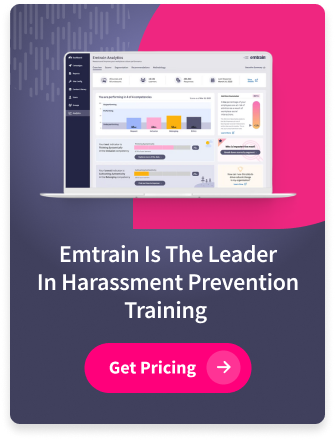Here’s a pattern we’re seeing in organizations everywhere: managers are becoming more self-aware, more receptive to feedback, and more attuned to their own impact. They’re adjusting their behavior based on criticism. They’re more conscious of how their actions might make others uncomfortable. By most measures, they’re growing as leaders.
And yet, when team conflict arises—when tensions surface and uncomfortable situations demand intervention—these same managers are struggling. They know they should step in. They want to help. But they don’t know how.
This is the leadership paradox we observed in our data in 2025: Managers have developed a degree of self-awareness and social awareness but have not yet progressed to mastering social dynamics—the ability to interpret emotional drivers, manage volatility and uncertainty, and keep focus on work.
And the timing couldn’t be worse because we’re in an era of constant disruption—AI integration, organizational restructuring, evolving compliance requirements. Managers can’t afford employee conflict or withdrawal as they are trying to drive effective change. They need to navigate ambiguity without losing productivity, address the emotional impact of transitions, and create clarity about what’s changing and what remains stable. The manager’s job isn’t easy.
Welcome to the fifth installment of our 2026 Workplace Culture Report series, where we examine the leadership development crisis that’s quietly undermining organizational performance—and what it means for both managers and the organizations that depend on them.
The Perfect Storm: Why Manager Struggles Matter More Now
Let’s be clear about the context managers are navigating. They’re facing:
Rising social tensions as political polarization infiltrates workplace relationships
Unprecedented uncertainty as AI threatens to reshape or eliminate roles
Interpersonal complexity as empathy declines and people become more self-protective
Organizational instability as companies reduce or eliminate middle management layers
Burden of transformation as they implement changes in processes and ensure employee adaptation
In other words, employee’s social tensions are becoming counterproductive just as managers are being asked to transform their structures and processes—all while their own career trajectories become more uncertain.
The cruel irony: Organizations are cutting management layers just as remaining managers face heavier workloads from rising conflict.
The Data: A Portrait of Overload
Emtrain’s analysis reveals both encouraging progress and concerning gaps:
What’s Improving: Self-Management
+7.60%: Managers are more attentive to how their actions or comments might make someone uncomfortable
+5.51%: Decision-makers are more transparent about decision-making processes
+2.80%: Managers adjust their behavior based on constructive criticism
+2.74%: Managers help teams be productive by removing blockers and resolving issues
What this tells us: Today’s managers are more self-aware, more open to feedback, and more focused on removing obstacles for their teams. These are significant leadership capabilities that deserve recognition.
What’s Declining: Team Management
-2.69%: Manager ability to approach team conflict in ways that lead to healthy resolution
-2.37%: Manager understanding of how their position influences situations
-1.53%: Manager skills to handle uncomfortable situations at work
What this tells us: The same managers who excel at self-management are struggling when conflict involves helping others naviagate their interpersonal boundaries – it’s about navigating tensions between team members, addressing uncomfortable behaviors, and leveraging their positional authority appropriately.
The Power Dynamics Blind Spot
The decline in managers’ understanding “how their position influences a situation” is particularly concerning. Positional power isn’t about authority—it’s about recognizing how your role shapes every interaction.
When managers don’t understand their power:
- Employees may interpret suggestions as directives
- Casual comments carry disproportionate weight
- Silence from leadership creates a vacuum others fill with anxiety
- Well-intentioned questions feel like interrogations
This blind spot becomes especially dangerous during conflict resolution, where misuse of positional power can escalate rather than resolve tensions.
What’s at Stake—and What’s Possible
When managers lack team management skills, organizations face escalating costs: unresolved conflicts drain productivity, talent leaves, issues escalate to HR and legal, and manager burnout accelerates. Perhaps most concerning, talented people opt out of management altogether, emptying the leadership pipeline.
But here’s the opportunity: these skills are learnable. The self-awareness improvements prove managers are capable of growth—they need targeted development in specific areas.
For organizations, investing in conflict resolution and power dynamics training delivers reduced escalation costs, improved retention, enhanced innovation, and stronger bench strength for future leadership roles.
For individual managers, developing these capabilities increases marketability, builds career resilience in an era of shrinking middle management, reduces stress, and positions you for senior leadership roles that require exactly these skills.
What Managers Actually Need: The Development Roadmap
The skill gap is real, but addressable. Here’s what targeted leadership development must include:
1. Conflict Resolution Frameworks
Specific tools for:
- Setting ground rules for team interactions, prioritizing respect
- Intervening without taking sides or imposing solutions
- Knowing when to involve HR vs. handle independently
2. Power Awareness and Dynamics
Training that helps managers:
- Recognize how positional authority shapes every interaction
- Distinguish between influence and coercion
- Create conditions where employees feel safe disagreeing
- Use power intentionally to create opportunities for others
3. Change Management as Core Leadership Competency
Critical capabilities leaders need:
- Maintaining team focus and productivity amid organizational instability
- Providing information, time, support and maintaining your own composure
- Acknowledging legitimate concerns about job security and role evolution
- Creating psychological safety for people to express anxiety or concerns
4. Empathetic Leadership in Practice
Moving beyond awareness to action:
- Reading emotional dynamics in team settings
- Responding to distress without taking responsibility for it
The Truth for Organizations and Managers
To organizations: If you’re reducing management layers, the remaining managers need more support, not less. Managers are the culture—they don’t just influence it, they are the daily experience of work for most employees. The self-awareness improvements show managers are trying. They need you to invest in their development so they can manage not just themselves, but the complex team dynamics that determine organizational success.
To managers: If you’re recognizing yourself in this struggle—you’re not alone, and it’s not a character flaw. Conflict resolution and power dynamics are sophisticated professional skills most managers have never been taught. The fact that you’re improving your self-awareness proves you can grow. Developing these capabilities will make management more sustainable and less stressful. You’ll spend less energy worrying about conflicts and more energy doing strategic work.
The bottom line: Leadership quality determines organizational outcomes more than any other factor. The organizations that invest in closing this gap will build competitive advantage. The managers who develop these capabilities will become indispensable assets with thriving careers.
Develop the Leaders Your Organization Needs
The leadership gap is real, but addressable.
Access comprehensive leadership development resources:
- Get assessment tools to identify specific skill gaps in your leadership team
- Access evidence-based training frameworks for conflict resolution and power dynamics
- Implement coaching programs that build sustainable capability, not one-time awareness
Your managers want to succeed. Give them the tools to do it.








